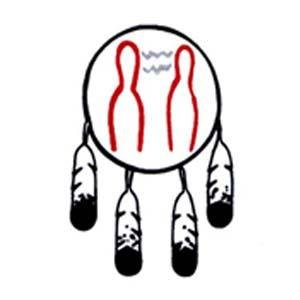Museum
-
Front Gate
Visitors to the Museum will enter through the front gate. The mural to the left, on the side of the BAIC building, was originally created during BAIC’s 1980 Summer Arts Program and has since been refurbished.
-
Garden
The garden includes herbs and plants that were used by Indian people on the East Coast, particularly in Maryland and North Carolina.
-
Garden Wall
The wall that begins at the front gate and extends to the Multi-Purpose Center has been painted and will be utilized for text, mosaic art, and murals.
-
Multi-Purpose Center
The Center’s floor space is used for a variety of programs and events, culture classes, meetings, and fundraising initiatives. Consequently the space is not generally used for exhibits. However, the Museum Board plans to utilize the wall space for murals and text. Additionally, Museum sponsored and/or related programs (e.g. films, discussions, spiritual programs, events) take place in the Center.
-
Reception Area
Visitors will enter the Museum from the rear of the garden. The reception area is to the left just inside the entrance, while the Multi-Purpose Center is located on the right. Visitors will be directed to learn about BAIC’s and the Museum’s founding, as well as view the Museum’s unique logo placed on the entrance threshold. It is based on the traditional Pinecone Patchwork symbol of the Lumbee Tribe and is meant to portray the coming together of old and new traditions, and unity for all those who enter.
-
Hallway
The hallway linking the reception area to the front of the Museum provides space for photographic exhibits, paintings, murals, wall hangings, BAIC’s history and accolades, etc.
-
Gift Shop
The Gift Shop is located at the end of the hallway, just before the main Museum area. The shop carries a variety of authentic Native American items: jewelry, clothing (hats & t-shirts), baskets, ceramics, paintings, coffee, books, incense, etc.
-
Major Display Area
The major display area is the heart of BAIC’s Heritage Museum. The eclectic variety of artifacts and exhibits range from prehistoric to modern and represent Indian cultures from across North America. A variety of different mediums—such as display cases, interactive exhibits, flat screens and a sound system—are utilized to provide information and insight about the histories, cultures, experiences and identities of the Indian peoples of North America, indigenous Maryland tribes, and the Lumbee from North Carolina.
There is a song that begins “When Columbus discovered America somebody was already here”. From that time forward the people already here, the native peoples of North, Central, and South America have been essentially invisible. Our history, culture, experiences, accomplishments, and wisdom have been either ignored or distorted.
Thankfully, in recent decades that has started to change. The creation of the National Museum of the American Indian in the nation’s capital and a number of state and tribal museums are reflections of that change. The Baltimore American Indian Center (BAIC) is proud to add our museum to that number.
The symbol chosen to represent BAIC’s Heritage Museum, though unique in the world, is based on the traditional Pinecone Patchwork symbol of the Lumbee Tribe of North Carolina. This is in tribute to the Lumbee leaders who founded the Baltimore American Indian Center and may of those who have kept it going for the Native community of Baltimore. (The museum logo was designed by Community Artist Ashley Minner).
The circular shape of the symbol represents the Circle of Life and it emphasizes the importance of each Native being a whole person. The four colors of the circle represent the four qualities of the balanced life: the spiritual, the emotional, the physical and the intellectual.
The colors represent the four directions – East (yellow), South (red), West (black), and North (white), and are common to many Native cultures across the country. It is believed that together these colors not only represent a well-balanced individual, but also a complete human being. This balance and completeness is universal and represents the equality of all humankind. The brown tiles between the yellow, red, black and while tiles represent the Baltimore American Indian Center, a cornerstone of our community that binds us together.
This symbol, placed at the threshold of the Baltimore American Indian Center, is meant to portray the coming together of old and new traditions, and unity for all those who enter. We welcome all who come with curiosity, pride, imagination and best wishes. We hope you will leave in good spirits before departing.


